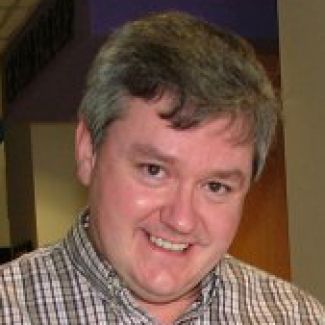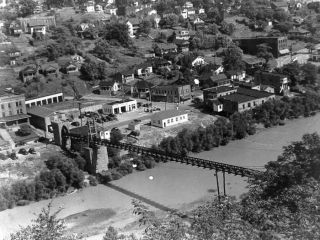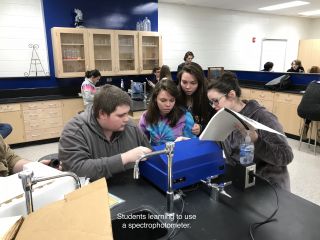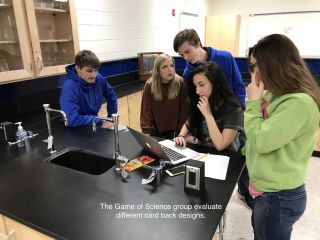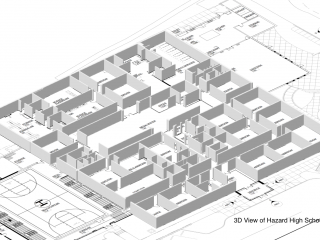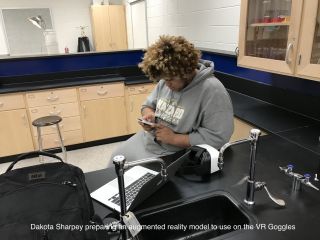John Handshoe
Snapshot
Augmented Reality Used to Replace Missing Historical Landmarks
Test data indicates a need for increasing the variety of teaching strategies in our classrooms. Current methods, while often efficient, may neglect other powerful strategies. When historical sites are damaged or lost, there may be adequate records, such as photographs or other information, that allows for the creation of reasonably accurate models. Using existing technology, these digital models would be geotagged to their original location and orientation as closely as possible. When a site visitor utilizes the software to view the site through a smartphone or pad, the missing item from the site will be displayed, in place, for viewing. My proposal is to identify at least five sites in the region that have enough historical information available to recreate augmented reality models for future geotagging. In addition, as a proof of concept, at least one augmented model from the list will be created and geotagged. Finally, again with existing technology the model could be uploaded to Google Earth and show up in search results as a 3D model. A possible example of one such model could be the recreation of the cabin of Randolph McCoy that was burned during the Hatfield McCoy feud in 1888. When a visitor to the site utilizes a smartphone with the software running, a model of the destroyed cabin would appear on the ground in the display of the device. The user could walk around the site and observe the cabin from all sides. This application of existing technology has many implications for historical preservation and even the possible re-creation of historical events. Imagine not only being able to view the cabin but the gunfight that led up to the burning of the cabin from any direction!
Mine Ponds to Demonstrate the Relevance of School Work
Often, science classroom experiences lack relevance to students. Student surveys have often indicated that this lack of valid material can result in lower achievement. Students may find laboratory experiments boring because they aren’t really experiments but repeated exercises to teach concepts more efficiently. Also, students often fail to attach importance to materials or activities because they wonder about the purpose and applicability to their lives and even community. I propose a feasibility study to explore the possibility of harvesting algae from surface mine ponds previously used to assist in collecting run-off from mining operations. This will expose students to real and relevant activities that have the potential to impact their area. The ease of growing microalgae is widely known, as well as the relatively high percentages of lipids. Basically, it only requires water, sunlight, and CO2, to produce algae and, in addition to being a source of biodiesel, algae also consume CO2, and after the lipids are extracted, the remaining biomass can be utilized as feed stock for animals. Microalgae can double its population in as little as 24 hours with adequate sunlight. Adding nutrients such as nitrogen and phosphorus will also speed up the process. An excellent source of these two elements in animal or even human waste. Sewage companies already transport human waste to mines for safe disposal by evaporation. There may be a possibility of utilizing this practice as well to increase the production rate of algae. Since the creation of algae usually takes place in the top four inches of water, the depth of the ponds will be adequate. We will collect several samples from area sediment ponds and attempt to grow algae in them under conditions similar to those at the mined area.
The Game of Science
Download Presentation Powerpoint Download Presentation PowerpointStudent engagement has long been a problem of practice, especially in science. We have considered the fact that this is a major contributing factor in some of our test scores. We constantly observe the student that doesn’t feel they quite “get” science and our proposal would be to develop a fun, science-based, card game that would accurately incorporate scientific concepts in a way all students could learn from. Sometimes teachers may avoid activities that they feel may be too “fun”. We hope to create this game in such a manner as to allow these students to not be overwhelmed but included in the learning process. This game, we feel, would result in a measurable increase in the involvement of students in the learning process that we may otherwise overlook. The basis for the game would be the relationship between matter and energy. Players would first vie for the creation of elements, then ever increasingly complex reactions and processes. Ultimately, the players would reach the level of reactions taking place in living organisms. The cards themselves would be collectible, much like other non-science related card sets. The grant money would be used to research and develop the card game rules with any remaining funds going into the graphical design of the individual cards. Ultimately, we would hope to continue to refine the game and the cards themselves to the point they become a marketable and potentially revenue-generating item. This revenue would be used to update and cover production costs of the cards. To evaluate this, we would survey students on their self-perceived level of desire to participate in a given science class. In addition, a simple pre-evaluation would be administered. The card game would be utilized for a predetermined period of time, and afterwards, the survey and evaluation would be re-administered and the results evaluated.
Download Presentation Powerpoint
